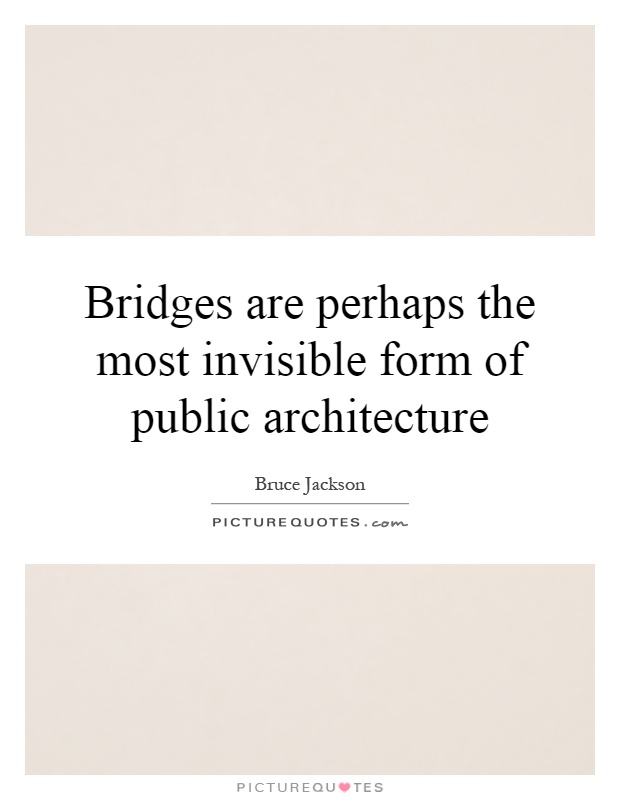Bridges are perhaps the most invisible form of public architecture

Bridges are perhaps the most invisible form of public architecture
Bridges are indeed a fascinating form of public architecture that often go unnoticed by the general public. They serve as vital connections between different areas, allowing for the smooth flow of traffic and commerce. However, despite their importance, bridges are often overlooked in the realm of architecture. Renowned photographer Bruce Jackson has captured the beauty and significance of bridges in his work, shedding light on their often overlooked role in our society.Jackson's photographs of bridges showcase the intricate designs and engineering feats that go into creating these structures. From the graceful arches of a suspension bridge to the sturdy beams of a truss bridge, each bridge has its own unique character and charm. Jackson's keen eye for detail allows him to capture the essence of these structures, highlighting their beauty and functionality.
One of the reasons why bridges are often considered invisible forms of public architecture is their utilitarian nature. Unlike grand cathedrals or towering skyscrapers, bridges are built for a specific purpose – to connect two points and facilitate the movement of people and goods. As a result, they are often seen as mere conduits for transportation, rather than works of art in their own right.
However, Jackson's photographs challenge this perception by showcasing the beauty and elegance of bridges. Through his lens, bridges are transformed into stunning works of art, with their intricate designs and structural elements taking center stage. Jackson's photographs capture the play of light and shadow on the steel beams of a bridge, or the reflection of a bridge in the still waters below, highlighting the aesthetic appeal of these often overlooked structures.







 Friendship Quotes
Friendship Quotes Love Quotes
Love Quotes Life Quotes
Life Quotes Funny Quotes
Funny Quotes Motivational Quotes
Motivational Quotes Inspirational Quotes
Inspirational Quotes